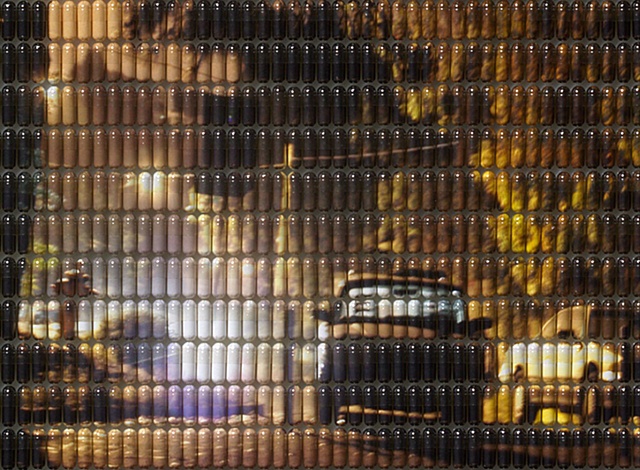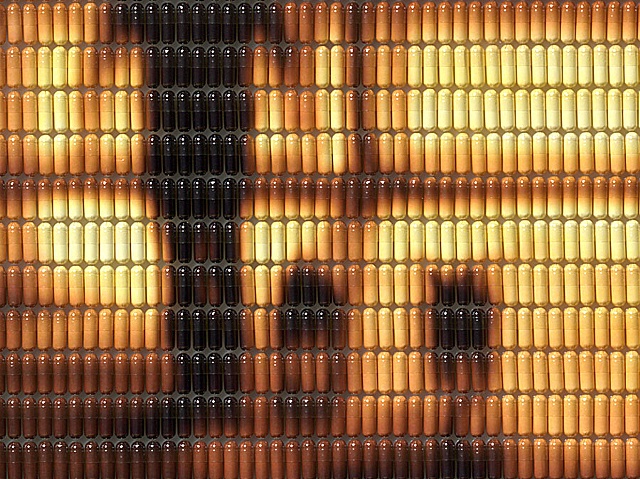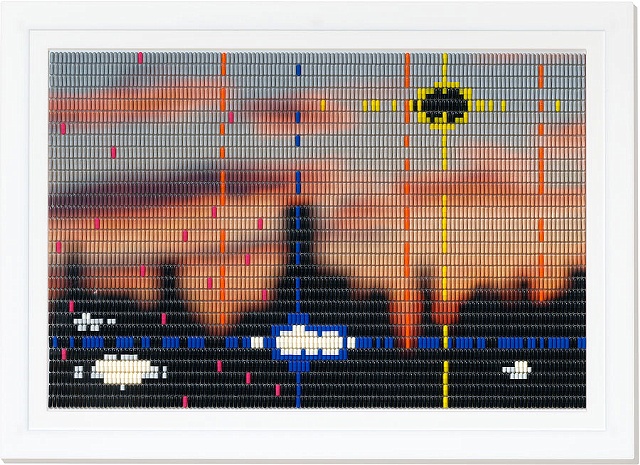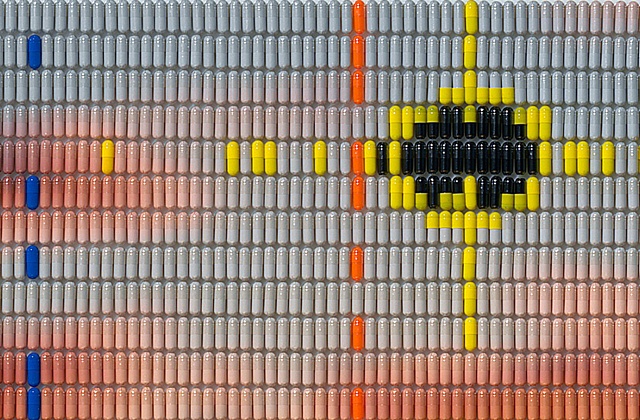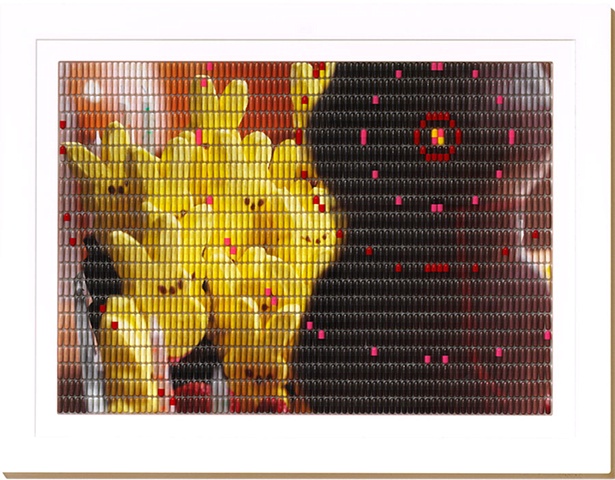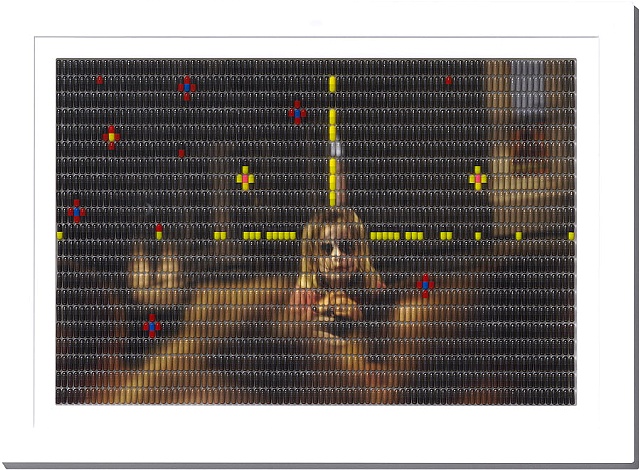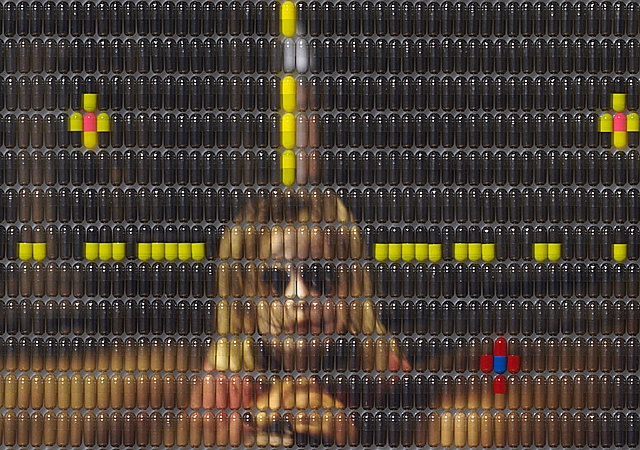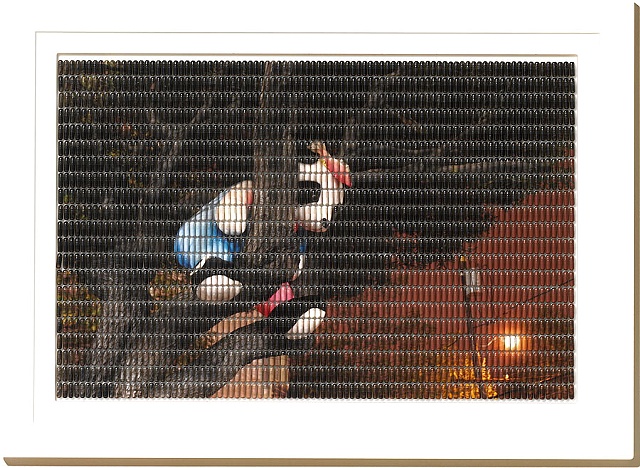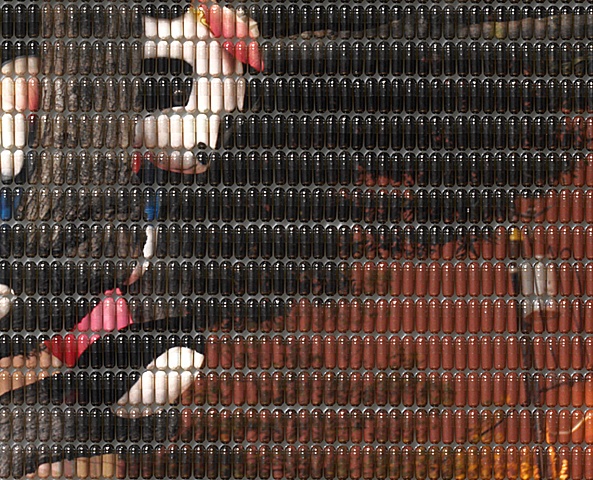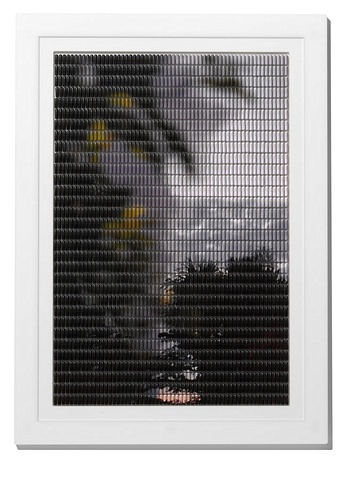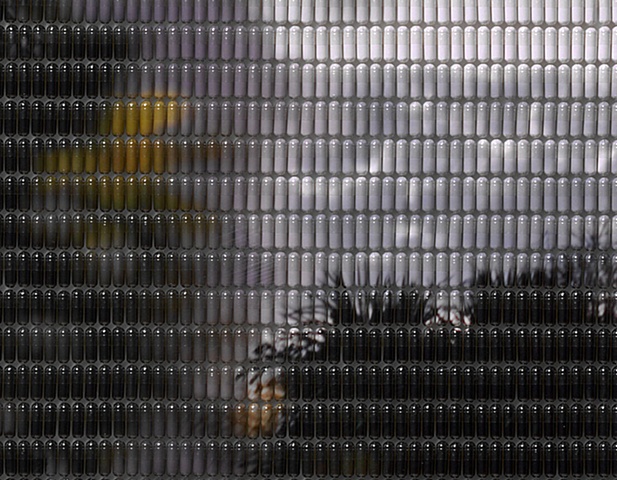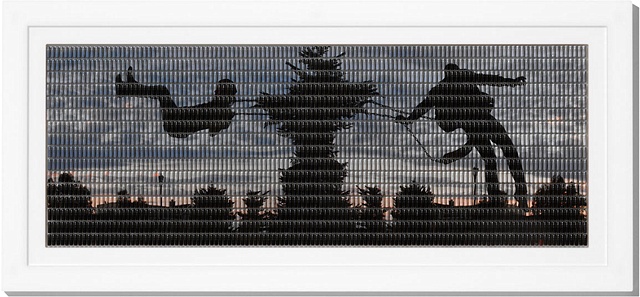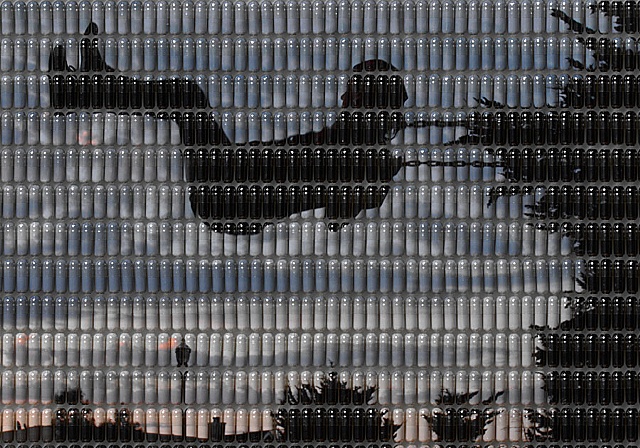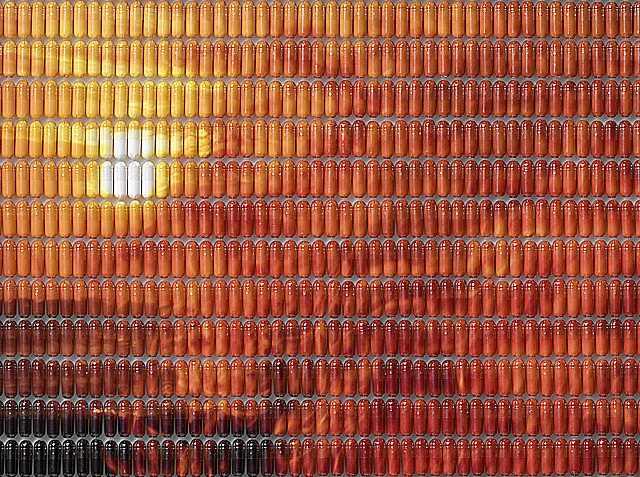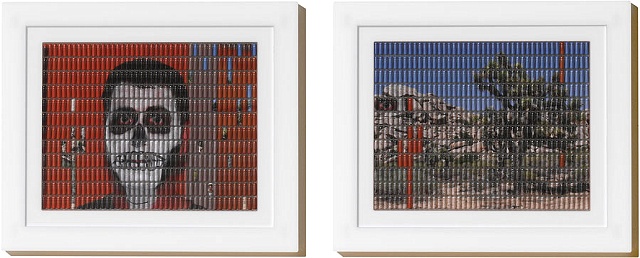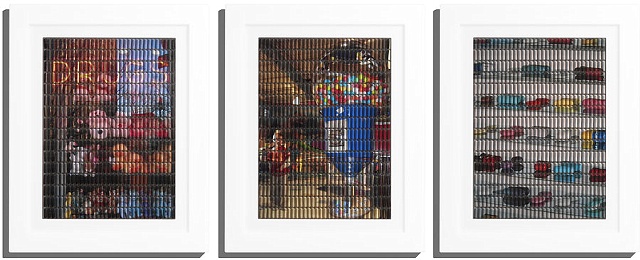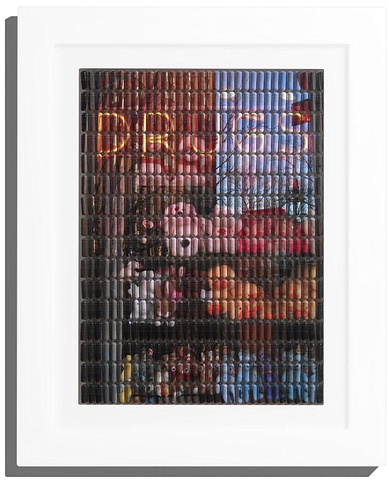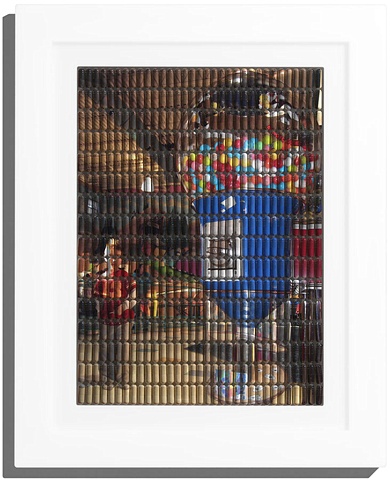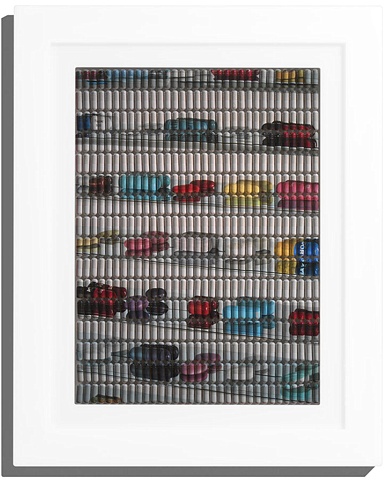Better Living
"Andy Diaz Hope deconstructs his own digital photographs and painstakingly reassembles the original image in a mosaic of gelatin pill capsules, each containing small portions from several original prints. As a continuation of his Morning After Portraits series, Diaz Hope has turned his lens on the hidden landscapes of drug culture—from high school hideaways to psychiatric institutions. “Better Living,” the title of his first solo exhibition at Catharine Clark Gallery, references the promise offered by pharmaceutical companies, specifically science megacorp DuPont’s ad slogan from 1935 through the mid 1980s “Better Things for Better Living…Through Chemistry.” This slogan spawned rigorous social critique in the 1960s and 70s, such as with pop artist Roy Lichtenstein’s “Peace Through Chemistry.” All of the works in the exhibition are housed in self-made and precisely constructed acrylic and Plexiglas frames—this further underlines the level of detail and meticulousness inherent in Diaz Hope’s work and belies the artist’s background as a Stanford educated industrial designer. The deliberately soft compositions offer a dynamic counterpoint to the finely constructed technical execution of each piece. "
- Catharine Clark Gallery press release

